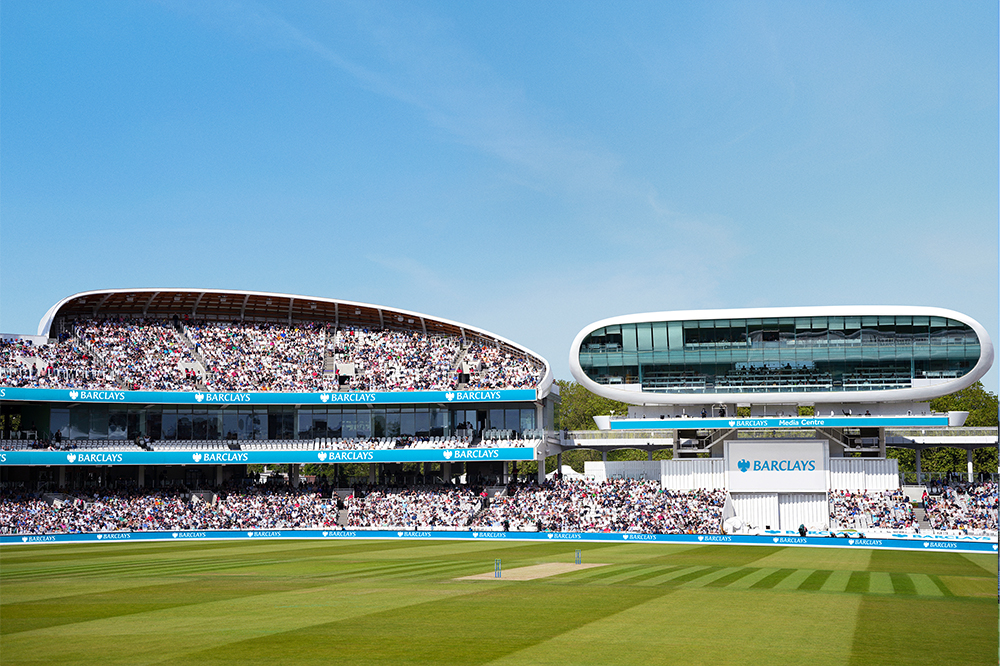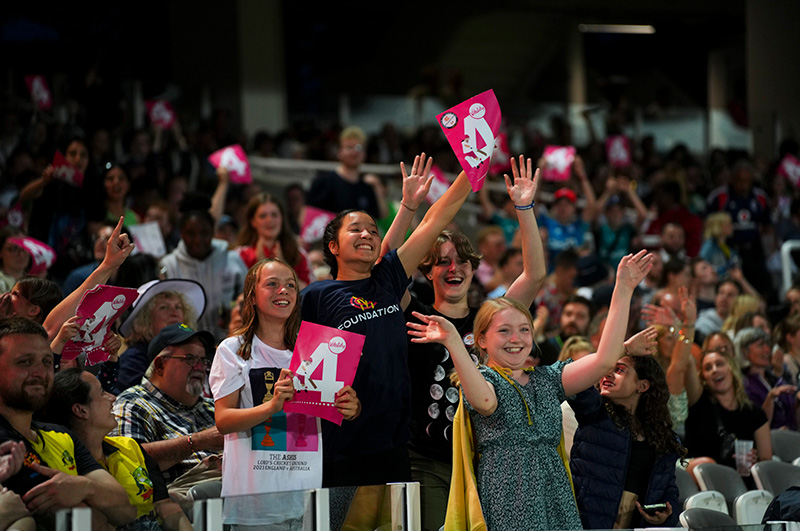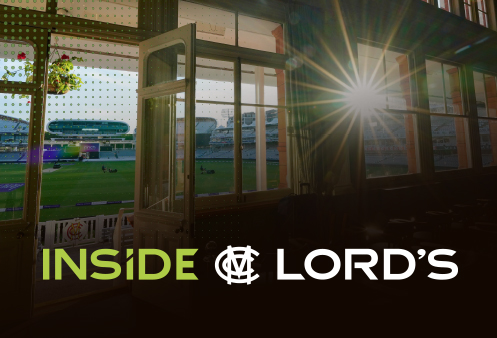Dinesh Karthik named Mentor and Batting Coach for London Spirit’s Men’s team
Read story
Come here to find all the information you need to help you plan your visit to the Home of Cricket, the latest news from the Ground and to book your event.

We’ve got a wide variety of formats covered with an exciting line up of matches to get your cricket fix.
Whether you like red or white ball, domestic or international, or men’s or women’s cricket, Lord’s will have the perfect cricket experience for you, your family and friends.

Marylebone Cricket Club is the world’s most active cricket club, the owner of Lord’s Ground and the guardian of the Laws of the game. Find out more about the history of MCC, our work in the Community and the famous Lord's Museum.
FIND OUT MORE

Step closer. Your new digital platform at the Home of Cricket.
Subscribe now for early access to selected international matches, exclusive content, coaching masterclasses and many more discounts and offers.
Your access to Lord's like never before.

Marylebone Cricket Club is one of the World's most active Cricket Clubs, the owner of Lord's Ground and the Guardian of the Laws and Spirit of the Game.
With around 200 full time staff members covering a wide range of sectors - from IT to Chefs to Pavilion Stewards - there is a role at the Home of Cricket for everyone.

Posted: 14 October 2025
MCC President Ed Smith moderated the conference, which brought together the relevant areas of the industry for the first time, including retailers, willow suppliers, bat manufacturers from across the world, innovators and voices from other sports. The International Cricket Council (ICC) is aware of MCC’s research and development in this area and gave their support to the discussions, with Wasim Khan (General Manager, Cricket) addressing the group.
The emergency is generated from a positive development, with cricket growing on a global scale and the increase in demand for bats, particularly those of a higher grade. The key issue regarding the shortage has been the reliance on English willow and the scarcity in availability of that wood, which has led to huge inflation in price in recent years.
The challenge for MCC, and the game at large, is to find a solution that allows more bats to be produced cost-effectively, which continue to perform at a level whereby the balance of bat against ball is maintained.
One of the potential solutions is lamination, where an English willow face could be backed by cheaper and lesser-performing Kashmir willow, or even other woods. This would lead to less tree wastage and reduced demand on English willow. MCC’s Laws already permit lamination for use in the junior game. This solution is more suited to the recreational game, with a desire to keep bats in the professional game as pure as possible. Another solution, still in its relative infancy, is the exploration of alternative materials, which essentially focuses on creating non-wooden, or wood derivative, bats. A key risk with this solution is the potential of them out-performing wooden bats, upsetting the balance of the game and increasing the risk of injuries.
There were various panel discussions throughout the day, which included case studies into other sports such as golf and hurling, highlighting the fact that cricket research is underdeveloped in this area.
Sustainability is a key consideration for the future development of bats. For example, lamination ensures that more of the tree is used, while composite bats, which may consist of non-wooden materials, are likely to be less environmentally friendly.
MCC will continue research and development in this area, with a view to reassessing the Laws of the game in 2026.
Rob Lynch, Director of Cricket and Operations at MCC, said: “It was great to welcome so many leaders of the cricket bat industry to Lord’s, including retailers, suppliers and manufacturers from across the market.
“It is clear to everyone in the industry that more needs to be done to ensure the supply of cricket bats continues to meet the increasing demand, which is the inevitable consequence of cricket’s global growth.
“MCC is a club that is uniquely placed to have a role in bringing people together and encouraging collaboration for the good of the game. This is the first time such a meeting of minds in this industry has taken place and I look forward to the actions that come from this.”